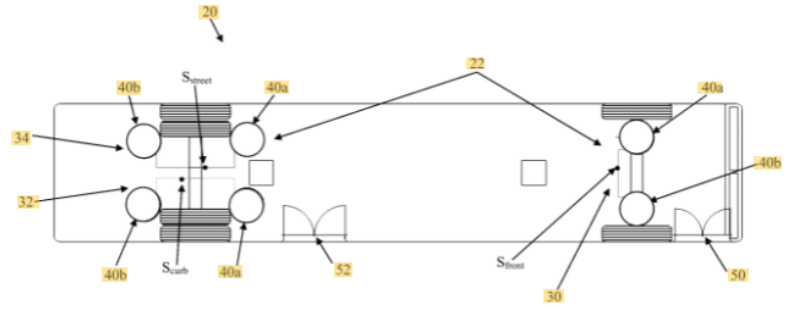Vehicle-weight based automated passenger counter
A system and method for estimating the number of passengers on a mass transit vehicle.

Applications
- Mass transit vehicles - buses, passenger trains, light rail trains, etc. Transit agencies can improve scheduling, bus routing, and accurate ridership reporting.
Key Benefits & Differentiators
- Easy, scalable installation: uses off-the-shelf sensors and microcontrollers
- Real time, stop-specific data analysis enables better route management
- Accurate passenger counts accounts for non-passenger weights (luggage, bikes, etc.)
Overview - Vehicle-weight based automated passenger counter
Researchers at the University of Minnesota have developed an automated system and method for estimating the number of passengers on a mass transit vehicle. This technology measures the change in mass of the entire cabin using three pressure sensors mounted in the vehicle suspension system. Coupled with GPS, the vehicle controller area network (CAN) connection, microprocessor, and algorithms, this will serve as an automated passenger counter (APC) system to temporally and geospatially determine boardings, alightings, and current passenger load of the vehicle on a per stop basis. With a specific calibration procedure involving placement of known masses throughout the vehicle, accurate weight and location measurement.
This system utilizes off-the-shelf pressure sensors and inexpensive microcontrollers, reducing the number of unique parts and total system cost. In addition to passenger count, this system has the ability to triangulate passenger locations and weight distributions from the three or more pressure transducers installed on the bus, a feature only expensive video-based APC technologies can attempt. Lastly, this system aims to fix sources of error in the people counts caused by biased weights. Mothers carrying small children, passengers carrying luggages, bicycles or other objects aboard the transit vehicle bias the weight data collected by the pressure mat technology. As a result, errors are introduced into the counting statistics.
Phase of Development
TRL: 5-6Initial validation of the system has been done by comparing measured additional vehicle weight or weight above curb weight, to the people counts from existing infrared APC data.
Desired Partnerships
This technology is now available for:- License
- Sponsored research
- Co-development
Please contact our office to share your business’ needs and learn more.
Researchers
- William Northrop, PhD, Associate Professor, Mechanical Engineering
- David Kittelson, PhD, Professor, Mechanical Engineering
- Andrew Kotz, PhD